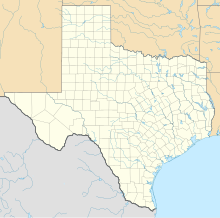Warren Wagon Train Raid
| Warren Wagon Train raid | |||||||
|---|---|---|---|---|---|---|---|
|
|||||||
| Belligerents | |||||||
| Kiowa |
|
||||||
| Commanders and leaders | |||||||
|
Satanta Satank Mamanti Big Tree White Horse Eagle Heart Big Bow Yellow Wolf Fast Bear |
Henry Warren | ||||||
| Strength | |||||||
| 150 | 12 | ||||||
| Casualties and losses | |||||||
| 3 | 7 wagon runners killed | ||||||
|
|
|||||||
The Warren Wagon Train raid, also known as the Salt Creek massacre, occurred on May 18, 1871. Henry Warren was contracted to haul supplies to forts in the west of Texas, including Fort Richardson, Fort Griffin, and Fort Concho. Traveling down the Jacksboro-Belknap road heading towards Salt Creek Crossing, they encountered William Tecumseh Sherman. Less than an hour after encountering the famous General, they spotted a rather large group of riders ahead. They quickly realized that these were Native American warriors, probably Kiowa and/or Comanche. The corn train quickly shifted into a ring formation, and all the mules were put into the center of the ring. The warriors destroyed the corn supplies, killing and mutilating seven of the wagoneer's bodies. Five men managed to escape, one of which was Thomas Brazeale who reached Fort Richardson on foot, some 20 miles away. As soon as Col. Ranald S. Mackenzie learned of the incident, he informed Sherman. Sherman and Mackenzie searched for the warriors responsible for the raid. In the end, notwithstanding the intervention of Guipago (Lone Wolf), well equipped with loaded rifles and revolvers and ready to fight, 3 of the war leaders involved were arrested at Fort Sill: Satanta (White Bear), Satank (Sitting Bear), and Ado-ete (Big Tree). Satank attempted to escape and was killed while traveling to Fort Richardson for trial. The other two were tried and convicted of murder.
Many of the Native American warriors came from the Fort Sill Reservation in Indian Territory, confident that they could terrorize Texas and escape to safety across the Red River, which was another legal jurisdiction. The ambush had been planned by a large band of Kiowa warriors, approx 180 warriors, under the leadership of Satanta, Satank, Mamanti, Big Tree, White Horse, Fast Bear, Yellow Wolf and Eagle Heart. Hidden in a thicket of scrub in the Salt Creek Prairie, they observed the slow approach of General William Tecumseh Sherman's inspection retinue of approx 18 men.. Although the Kiowa war party outnumbered the US Army troop by ten to one, they didn't attack, maybe because the Army troopers would have inflicted too many casualties. The Kiowa story is that, the previous night, Mamanti ("He Walking-above"), the shaman, had prophesied that this small party would be followed by a larger one with more plunder for the taking. The braves were rewarded three hours later when 10 mule-drawn wagons filled with army corn and fodder trundled into view. The Kiowa attacked and quickly overwhelmed this convoy. Seven muleskinners were killed, while five managed to escape. One of the mule skinners was tortured to death with fire by the Kiowa, his tongue cut out. The warriors lost three of their own, but left with 40 mules heavily laden with supplies. It was well after dark before the white survivors reached the nearby Fort Richardson and told their harrowing tale to the very officer whose party had passed unharmed under the Kiowa guns, William Tecumseh Sherman. General Sherman ordered the arrests of the Indian war chiefs at Fort Sill. Satank was killed in the train as he tried to escape the column of United States soldiers. The rest were tried in the first Indian trial in history. Satanta and Big Tree were convicted of murder on 5-6 July in Jack County, Texas. They were paroled two years later thanks to the steady behaviour adopted by Guipago in his dealing with the government agents, and were sent back to their people.
...
Wikipedia

